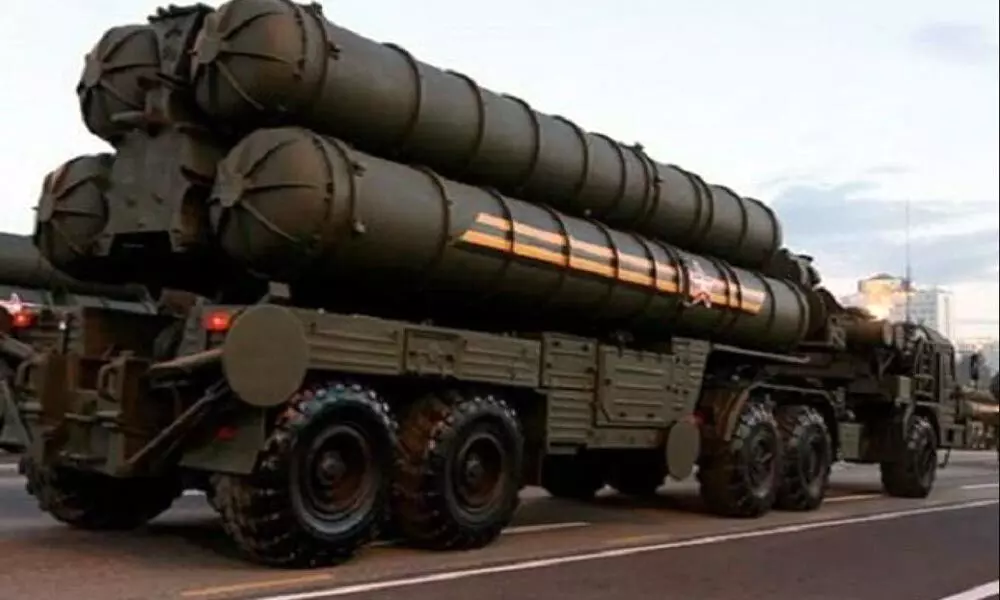How India's acquisition of S-400 missiles could build or damage Indo-US relations
Moscow has started deliveries of S-400 air defence systems to India ahead of Russian President Vladimir Putin’s scheduled to visit India in the first week of December
image for illustrative purpose

India is all set to receive the complete military hardware of the S-400 missile system from Russia. According to military experts, these air defence missile systems, also known as S-400 Triumf surface-to-air missile systems, will boost the country's air defence capabilities. India and Russia signed a $5.5 billion deal for five S-400 regiments in October 2018. However, this deal also comes with the risk of sanctions from the United States "under a 2017 US law that is aimed at deterring countries from buying Russian military hardware." Thus, the deal has the potential to build or damage Indo-US politico-military relations.
What is S-400 Missile System?
According to an article published in the US Air Force's Journal for Indo-Pacific Command, S-400 has "surfaced as an anti-access/area denial (A2/AD) asset designed to protect military, political, and economic assets from aerial attacks".
Most military observers acknowledge that the S-400 is one of the 'most advanced surface-to-air missile defence systems,' in its class, developed by Russia. The missile system is equipped with four types of missiles that provide cover from 40 km in short-range up to 400 km in long-range. The system can also 'track up to 160 objects in a 600 km range and target 72 objects in a 400 km range.'
On multiple occasions, former India Air Force Chiefs have termed the 'S-400 as a game changer.' The Russian missile system is not just superior on the battlefield they also augment the country's dwindling airpower strength. Furthermore, acquiring S-400s, especially when India faces a two-front threat from China and Pakistan, adds to India's military depth.
Why India needs S-400 missile system?
Indian military think tanks have been weighing a two-front threat from China and Pakistan for a long time. However, the frequent stand-off along the LAC with China and Pakistan ever-present hostility, nuclear blackmail and its ballistic-missile programs, when interposed with deepening bonds between India's two leading adversaries, have heightened the possibility of the twin threat. India has witnessed a study reduction in airpower due to its ageing air fleet, which has eroded its defences. Recently Chief of the Air Staff Air Chief Marshal (ACM) VR Chaudhari had cautioned that it would take Indian Air Force over a decade to reach the sanctioned strength of 42 fighter squadrons.
Undoubtedly, India needs to reinforce its defences with military equipment that gave it an edge over its adversaries. It has long, difficult-to-defend borders with China and Pakistan. And, S400 can enhance "India in air defence in South Asia." According to military experts, "the missiles would be first deployed in border areas to tackle threats from Pakistan and China along the western and northern frontiers."
What is the Risk to India?
The supplies of S400 has put India at risk of facing a range of financial sanctions from the United States under the Countering America's Adversaries Through Sanctions Act (CAATSA). The 2017 US law is farmed to deter countries from buying Russian military hardware.
Given that India enjoys strategic partnerships with the United States and Russia, the Indian government is confident that the US leadership would understand the need for the Russian missile system. Further, India found support from Republican Senator John Corny and Democrat Senator Mark Warner, who urged President Joe Biden to waive sanctions against India. The two lawmakers have cautioned that 'a punitive measure would endanger growing cooperation' between the two leading democracies.
For a similar military transaction between Turkey and Russia, the US imposed sanctions on Turkish, its NATO ally, for procuring S-400 from Russia. However, when it comes to India, the US has so far remained 'non-committal on a waiver to India under CAATSA.' In a recent meeting with a high-power US Congressional delegation led by Senator John Cornyn, Prime Minister Narender Modi discussed 'issues related to the developments in South Asia and the Indo-Pacific region.'
Moscow has started deliveries of S-400 air defence systems to India ahead of Russian President Vladimir Putin's scheduled to visit India in the first week of December. However, as India waits for the final US discussion on the deal, another risk needs to be addressed. Russia supplied the S-400 missile system to China, too. Thus, there is ever risk of communist cyber roughs exploiting weak spots to hack into the missile system and cripple them, especially during a stand-off between India and China.
India is among the few countries that can strike a diplomatic and strategic balance between the Russia and US. This ability to walk the fine balance between two competing global powers represents India's growing regional and international stature. Nevertheless, getting a US wavier for the deal will not be easy.
(The author is Founder of MyStartup TV)

